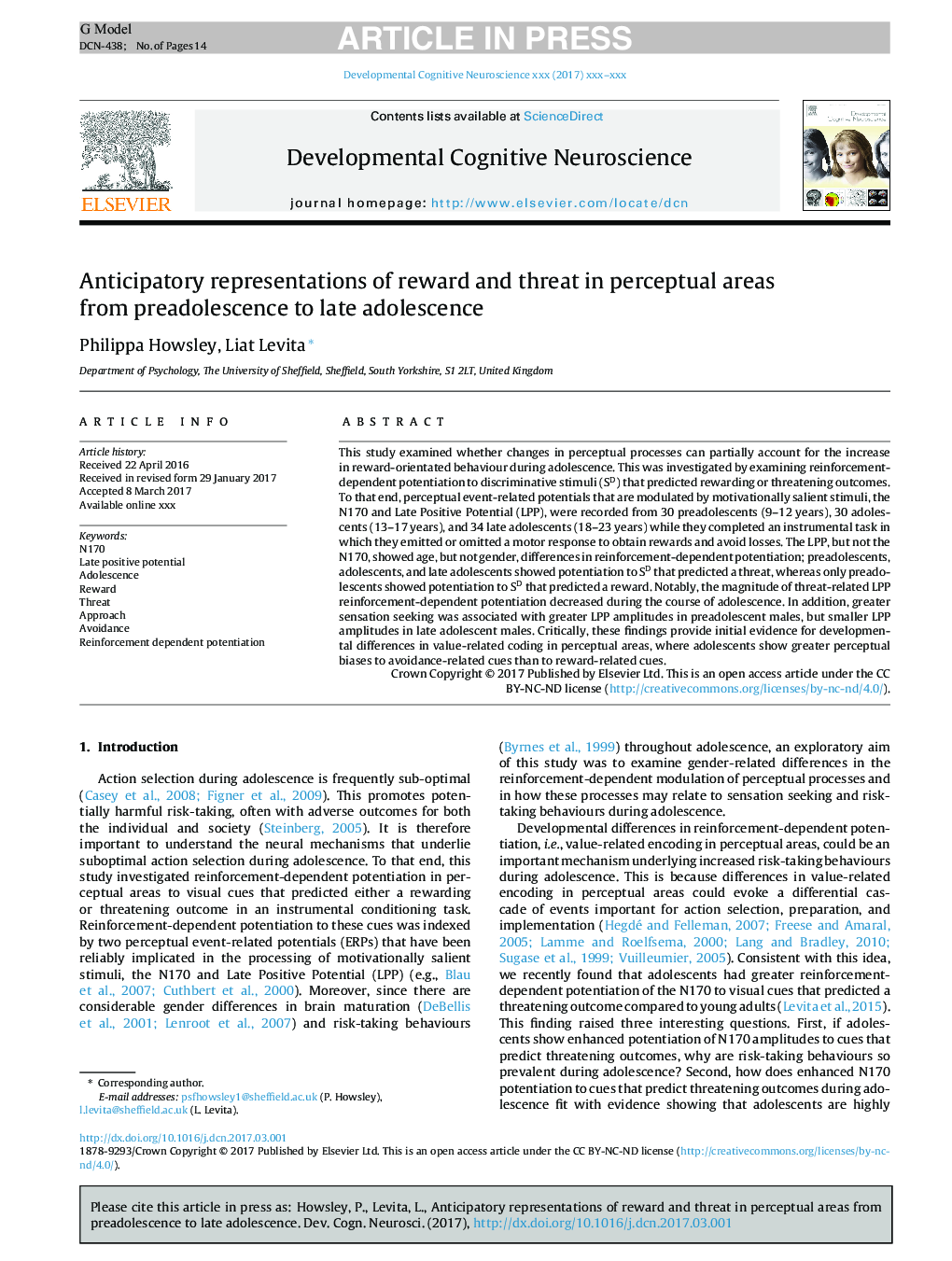| Article ID | Journal | Published Year | Pages | File Type |
|---|---|---|---|---|
| 5735882 | Developmental Cognitive Neuroscience | 2017 | 14 Pages |
Abstract
This study examined whether changes in perceptual processes can partially account for the increase in reward-orientated behaviour during adolescence. This was investigated by examining reinforcement-dependent potentiation to discriminative stimuli (SD) that predicted rewarding or threatening outcomes. To that end, perceptual event-related potentials that are modulated by motivationally salient stimuli, the N170 and Late Positive Potential (LPP), were recorded from 30 preadolescents (9-12 years), 30 adolescents (13-17 years), and 34 late adolescents (18-23 years) while they completed an instrumental task in which they emitted or omitted a motor response to obtain rewards and avoid losses. The LPP, but not the N170, showed age, but not gender, differences in reinforcement-dependent potentiation; preadolescents, adolescents, and late adolescents showed potentiation to SD that predicted a threat, whereas only preadolescents showed potentiation to SD that predicted a reward. Notably, the magnitude of threat-related LPP reinforcement-dependent potentiation decreased during the course of adolescence. In addition, greater sensation seeking was associated with greater LPP amplitudes in preadolescent males, but smaller LPP amplitudes in late adolescent males. Critically, these findings provide initial evidence for developmental differences in value-related coding in perceptual areas, where adolescents show greater perceptual biases to avoidance-related cues than to reward-related cues.
Related Topics
Life Sciences
Neuroscience
Behavioral Neuroscience
Authors
Philippa Howsley, Liat Levita,
